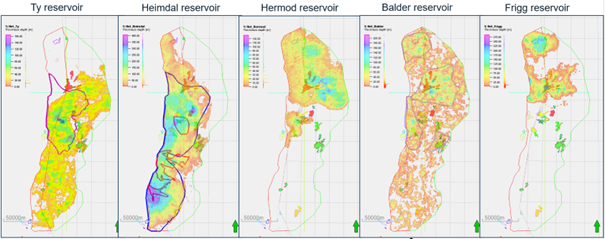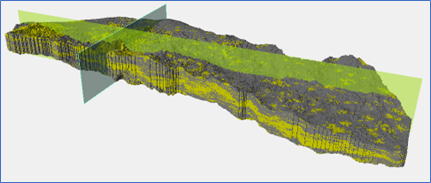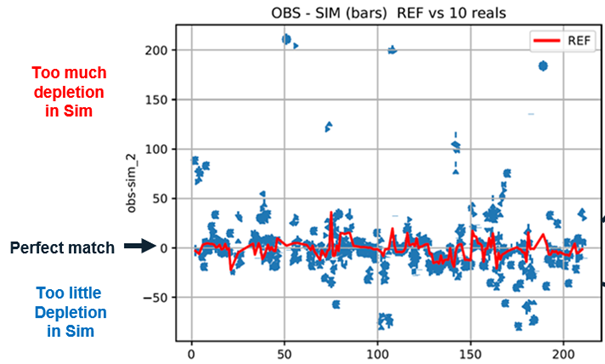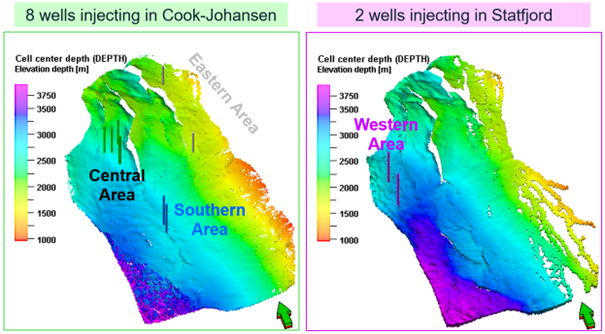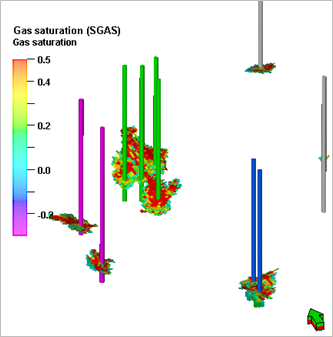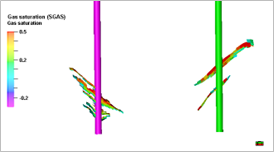Capabilities we delivered
- Regional geomodelling
- CCS modelling
- Static reservoir modelling
- Dynamic reservoir modelling
- Grid design
- Pressure history match
- Aquifer strength prediction
- CO2 plume prediction
Aquifer models can be used when licensees choose a drainage strategy for discoveries in the development phase. This means that they may avoid major investments in infrastructure for water injection. The models also make it possible to optimise the placement of CO2 injection wells.
The client had a well-defined vision for constructing two large-scale models.
The Frigg-Heimdal aquifer model aimed to elucidate how the Paleocene/Eocene aquifer contributes to the existing and planned fields in the region. Additionally, it was intended to employ the model for screening potential CO2 storage sites.
The Troll model’s objective was to comprehensively comprehend and quantify the feasibility of injecting and geologically storing CO2 within the Lower Jurassic formations.
Our Reservoir Management & Subsurface team was hired as assistance in designing and creating extensive grids and static models that were suitable for pressure history matching and dynamic simulation.
Our top-tier assistance empowered the client to construct expansive aquifer models, marking a pioneering endeavor in the North Sea. These reservoir models repeated meticulously integrated contemporary regional seismic interpretations and sedimentological insights meticulously conducted by NPD specialists.
Given the inclusion of a substantial volume of well data and diverse information within the models, characterized by uneven distribution, an inventive methodology was required for crafting the structural framework, devising the grid structure, and executing facies/property modeling.
A two-phase model with gas-liquid was formulated, commencing with the initiation of one PVT/equilibrium region for each field (container) within the hydrocarbon zone, interconnected with the aquifer. For the dynamic model of the Troll field area, we harnessed our expertise in Carbon Capture and Storage (CCS) to transform the static model. This adaptation enabled the simulation of CO2 injection and its dispersion across ten wells, facilitating assessment of the feasibility of geological CO2 storage.
In the Frigg-Heimdal model, AGR successfully aligned the pressure history of over 20 producing fields spanning from the 1970s to the present day, while also accurately calibrating the observed pressure data from numerous wells.
Furthermore, in the Troll region, AGR demonstrated injectivity patterns and traced the evolution of the CO2 plume across ten wells, extending to additional geological strata within the currently licensed zones and areas.
These digital models will give energy companies a better basis for decision-making, particularly regarding drainage strategy and predicting pressure support. The results were also shared with the academia.
The models have the potential to be used in work related to:
Capabilities we delivered
